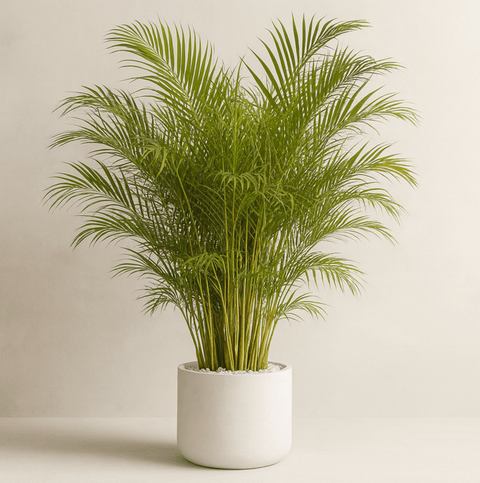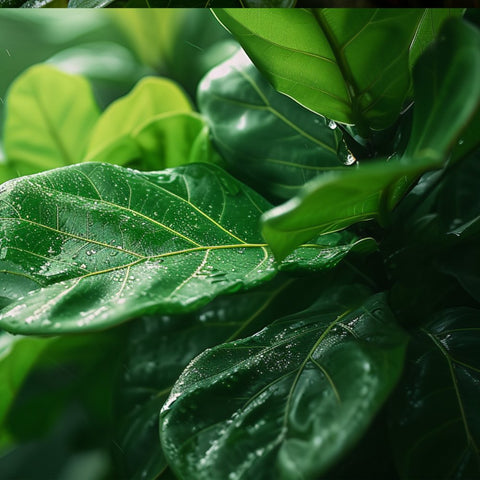Blog Post - Pruning Fiddle Leaf Fig: A Comprehensive Guide for Healthy and Beautiful Plants
Introduction
Welcome to our comprehensive guide on pruning fiddle leaf fig plants. In this article, we will provide you with all the information you need to know about the importance of pruning for the health and aesthetics of your fiddle leaf fig. Whether you are a seasoned plant enthusiast or a beginner, this guide will help you understand the growth habits of fiddle leaf figs, identify the signs that pruning is needed, and teach you the techniques and tools required to prune your plant effectively.
Understanding the Fiddle Leaf Fig

The fiddle leaf fig plant, scientifically known as Ficus Lyrata, is a popular choice for indoor plant enthusiasts. Known for its large, glossy, violin-shaped leaves, the fiddle leaf fig adds a touch of elegance and beauty to any room. However, to ensure the plant remains healthy and looks its best, regular pruning is essential.
Fiddle leaf figs have a natural tendency for upward growth, which can lead to tall, leggy stems and leaves concentrated at the top. Without proper pruning, the plant can become lopsided and unbalanced. Additionally, neglecting to prune can result in stunted growth, reduced leaf production, and increased susceptibility to pests and diseases.
When to Prune a Fiddle Leaf Fig

The best time to prune a fiddle leaf fig is during its active growing season, which typically occurs in spring and summer. During this period, the plant has a higher chance of recovering quickly and producing new growth after pruning. Pruning during dormancy in fall or winter is generally not recommended as the plant's growth is slower, and it may take longer to recover.
There are several signs that indicate your fiddle leaf fig needs pruning. These include overgrown branches, leaves touching the floor or surrounding objects, stems bending under the weight of leaves, and a lack of sunlight penetration to lower parts of the plant.
Tools Needed for Pruning

To successfully prune your fiddle leaf fig, you will need a few essential tools. These include sharp pruning shears, a clean pair of gloves, a spray bottle filled with water, a clean cloth or sponge, and a container with rubbing alcohol for sterilizing the pruning shears.
When selecting pruning tools, it's important to choose high-quality, stainless steel shears that can make clean cuts without crushing the plant's tissue. Maintaining and sanitizing your tools after each use is crucial to prevent the spread of diseases or pests between plants.
How to Prune a Fiddle Leaf Fig
Pruning a fiddle leaf fig may seem intimidating at first, but with the right techniques, it can be a simple and rewarding task. Here is a step-by-step guide to help you prune your plant:
- Inspect the plant: Start by evaluating your fiddle leaf fig's overall health and growth. Look for any dead or diseased branches, crowded areas, or signs of pest infestation.
- Identify branches for pruning: Select the branches that you want to prune, focusing on those that are overgrown, leggy, or interfering with the plant's overall shape.
- Make clean cuts: Use your sharp pruning shears to make clean cuts just above a leaf node or where the branch connects to the main stem. Avoid cutting too close to the trunk to prevent damage.
- Remove dead leaves and debris: After pruning, remove any dead or yellowing leaves from the plant. Clean the pruned areas with a damp cloth or sponge to prevent the spread of diseases.
- Monitor and maintain: Keep an eye on the pruned fiddle leaf fig and observe its response to pruning. Provide adequate water, sunlight, and regular fertilization to support the plant's recovery and new growth.
By following these steps, you can ensure a successful pruning session that promotes the health and aesthetic appeal of your fiddle leaf fig.
Pruning Tips for Specific Fiddle Leaf Fig Issues
If you're facing specific issues with your fiddle leaf fig, here are some additional pruning tips:
Addressing Leggy Growth and Long Stems
To address leggy growth and long stems, consider pruning the top part of the plant to encourage branching and a bushier appearance. Focus on removing the tallest stems and branches to promote a more balanced and compact growth pattern.
Dealing with Yellowing or Browning Leaves
If your fiddle leaf fig has yellowing or browning leaves, it may be a sign of nutrient deficiencies or waterlogging. In addition to pruning any affected leaves, ensure proper watering and consider adjusting your fertilization routine to provide the necessary nutrients for healthy leaf production.
Care after Pruning
After pruning your fiddle leaf fig, it's important to provide proper care to support its recovery and well-being.
Water the plant adequately, but avoid overwatering, as excessive moisture can lead to root rot. Ensure the plant receives adequate sunlight, but avoid placing it in direct, intense sunlight to prevent leaf burn. Regularly fertilize your fiddle leaf fig with a balanced fertilizer formulated specifically for houseplants to provide the necessary nutrients for healthy growth.
Monitor the plant closely for any signs of stress or diseases after pruning. If you notice any abnormalities, such as wilting, discoloration, or pest infestation, take prompt action to address the issue. Pruning can be a stressful event for the plant, so keeping a close eye on its health is crucial.
Common Mistakes to Avoid when Pruning a Fiddle Leaf Fig
While pruning is important for your fiddle leaf fig's health, there are some common mistakes you should avoid:
Overpruning or Removing Too Much Foliage
It's important to strike a balance when pruning your fiddle leaf fig. Avoid removing too many leaves or branches at once, as this can shock the plant and hinder its ability to recover. Prune selectively and gradually to maintain a healthy foliage-to-stem ratio.
Neglecting to Sanitize Tools after Pruning
After each pruning session, remember to sanitize your tools with rubbing alcohol or bleach to prevent the transfer of diseases or pests. Neglecting to sanitize your tools can lead to the spread of infections, which can be detrimental to your plant's health.
Frequently Asked Questions about Pruning Fiddle Leaf Figs
Can I Propagate the Pruned Branches?
Yes, you can propagate the pruned branches of your fiddle leaf fig and create new plants. Simply place the pruned branch in water or a well-draining soil mix, and with time and care, it will develop roots and become a new plant.
How Long Does it Take for a Pruned Fiddle Leaf Fig to Recover?
The recovery time for a pruned fiddle leaf fig depends on various factors, including the plant's overall health, growing conditions, and the extent of pruning. In general, you can expect to see signs of recovery, such as new growth and improved appearance, within a few weeks to a couple of months.
Conclusion
Pruning is a vital aspect of maintaining a healthy and beautiful fiddle leaf fig plant. By understanding the growth habits, recognizing the signs that pruning is needed, and following proper techniques and care, you can enjoy a thriving fiddle leaf fig that adds vibrance and elegance to your indoor space. Remember to provide the plant with ongoing care, observe its response to pruning, and seek further advice or assistance if needed. Happy pruning!






























Comments (0)
There are no comments for this article. Be the first one to leave a message!